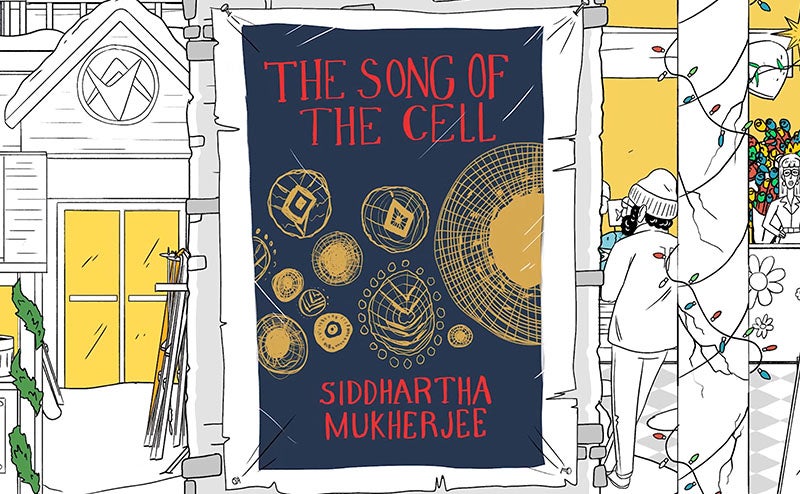I’m a big fan of America’s investments in the health and well-being of the world’s poor.
As regular TGN readers know, I’m a fan of Vaclav Smil, a Czech-Canadian professor emeritus at the University of Manitoba. I’ve read nearly all of his 37 books. I wait for new Smil books the way some people wait for the next Star Wars movie. Some years I don’t have to wait long. In 2013 alone, Smil published four!
I read Smil because he’s uniquely good at going both deep and broad. Many writers who come out of academia specialize in delving deep into a topic they’ve studied for years, but they typically don’t bring together insights from across many different disciplines. Many impressive writers who come from journalism are the opposite. They’re great at painting the big picture, but they’re not as well equipped to depict the fine details. Smil can do both with equal facility.
In his latest book, Energy and Civilization: A History, he goes deep and broad to explain how innovations in humans’ ability to turn energy into heat, light, and motion have been a driving force behind our cultural and economic progress over the past 10,000 years. Yes, our history has a lot to do with kings and queens and games of thrones. Smil shows that it has even more to do with energy innovation.
Here’s Smil’s thesis in a nutshell: Once groups of humans graduated from hunting and gathering and learned how to cultivate crops in ways that would produce more food than they needed for their own survival, they had the time and energy to use their brains in new ways. They applied that brainpower to getting even more efficient at converting energy into food—using animal power, tools, crop rotation, fertilizers, irrigation, and new seed varieties. The gains in crop production led directly to higher population densities. This, in turn, led to more complex societies and greater specialization of work, and an incredible array of advances in every area of human endeavor.
The past 300 years have seen the most miraculous advances in the human condition—and just about all of those advances can be traced directly to the exploitation of new forms of energy. Smil takes you through these advances in painstaking detail. For example, he shows that the biggest transition in the human condition started in the mid-18th century, after ironmasters in Europe began firing their furnaces with metallurgical coke, made from low-ash, low-sulfur coal. Coke-fueled furnaces could be much larger than charcoal (wood) furnaces and drove an increase in global production from 800,000 tons in 1750 to 30 million tons in 1900. A series of additional metallurgical innovations in the late 1800s led to the modern steel industry, which has provided the most important material for industrial development ever since.
With the help of original calculations and some good explanatory illustrations, Smil describes the other energy-related innovations that drove rapid economic growth and quality-of-life improvements—as well as profound environmental degradation—in the 19thth and 20 centuries. While many of the innovations will be familiar to you, you will undoubtedly learn new things about the steam engine, internal combustion engines running on gasoline, the generation of electricity, the transformer (“it made inexpensive, centralized electricity generation possible [and] would probably win a contest for a device that is as common and indispensible for the modern world as it is absent from the public consciousness”), and renewables.
As usual with Smil, he doesn’t overstate or oversimplify his case. He’s well aware that energy is not the only way to view the advance of humanity – things like morality play crucial roles too. “Energy is not the only determinant of … life in general and human actions in particular…. [It is] among the most important factors shaping a society, but [it does] not determine the particulars of its successes or failures.”
I’ll admit that Energy and Civilization is not easy reading. In fact, when I read my first Smil books years ago, I felt a little beat up and asked myself, “Am I ever going to be able to understand all of this?” But follows an easy chronological progression and is well edited.
The best way to give you a sense of the book is to share some of the remarkable facts Smil digs up. As you’ll see, they range over many different academic fields. They are not the kind of things you could simply pull off Wikipedia. They often involve original calculations that only Smil would do.
- Gathering roots was a super efficient strategy for foraging groups. “As many as 30-40 units of food energy were acquired for every unit expended. In contrast, many hunting forays, above all those for smaller arboreal or ground mammals in tropical rain forests, had a net energy loss or bare equivalence.”
- It’s fascinating to reflect on how much energy innovation occurred during the course of a single century. “When in 1900 a Great Plains farmer held the reins of six large horses while plowing his wheat field, he controlled … no more than 5 kW of animate power. A century later his great-grandson, sitting high above the ground in the air-conditioned comfort of his tractor cabin, controlled effortlessly more than 250 kW of diesel engine power.”
- We waste a tremendous amount of food. “The food supply in affluent countries is now 75% higher than actual need, resulting in enormous food waste (30-40% of all food at the retail level).”
Throughout every section of the book, Smil makes a clear case that energy consumption and economic growth are inextricably linked. In his words, “to become rich requires a substantial increase in energy use.” I fully agree with him. And in the past century or so, the biggest increase in energy use has come from fossil fuels—which are expensive and drive climate change. That’s why I’m spending a lot of my time and resources trying to accelerate research and development to make clean energy less expensive than fossil fuels, and just as reliable.
The main disagreement I have with Smil is about how quickly we can make the transition to clean energy. He is absolutely right that Moore’s Law and the speedy advances in software have misled people into thinking all innovation and adoption happens that quickly. Yet I am more optimistic than he is about the prospects of speeding up the process when it comes to clean energy.
Perhaps it’s the insights I have gained from my work with Breakthrough Energy Ventures (a fund that’s investing more than $1 billion in clean-energy innovation), what I’ve learned from experts connected with ARPA-E, or the research I see going on in the labs of the world’s top energy innovators. When I learn about their efforts, I can’t help but feel optimistic about what’s on the horizon—from carbon-neutral liquid fuels to game-changing improvements in energy generation, storage, and transmission.
Smil told me that his next book is going to be about growth—everything from crops and babies to empires and economies. The truth is, I’d read just about any topic he found interesting and wanted to dissect. But growth sounds like a perfect topic for him. I’m looking forward to it already.





